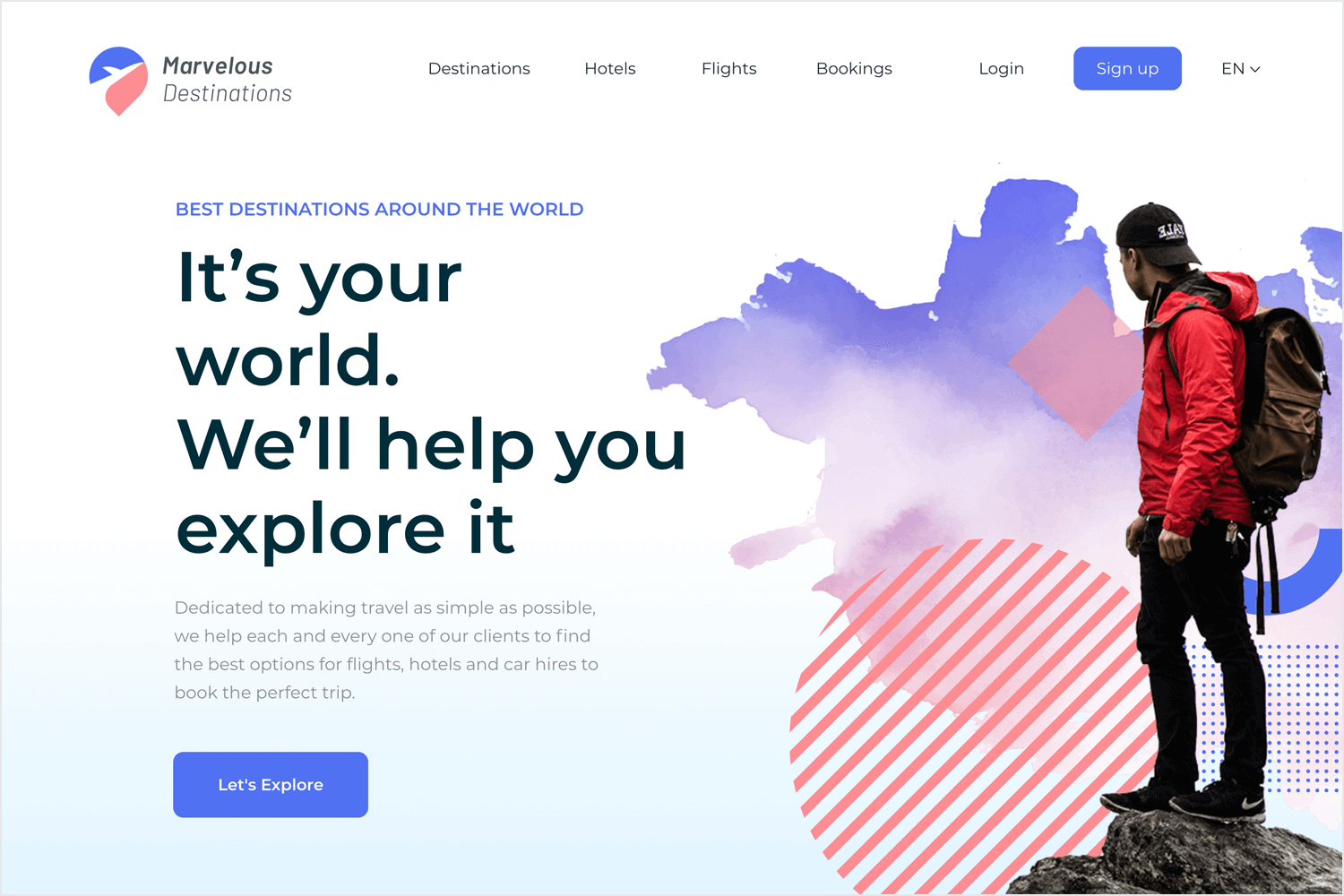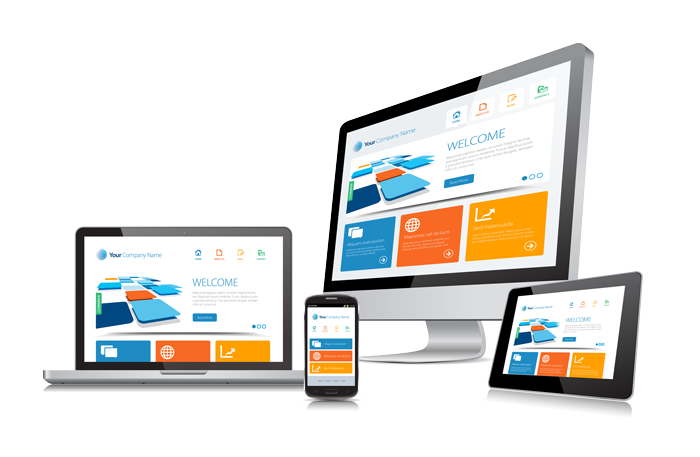The Impact of Responsive Attributes on Your Website Design Success
The Impact of Responsive Attributes on Your Website Design Success
Blog Article
Trick Techniques for Executing User-Centric Site Design to Increase Engagement
When considering the application of user-centric web site layout, specific techniques contribute in improving engagement. Thorough research into individual demands and preferences develops the foundation, leading the creation of individual identities to educate design options. Intuitive navigation and responsive interfaces are critical, making sure simplicity of accessibility throughout all devices. Customizing web content boosts user complete satisfaction, and robust availability attributes widen reach. These techniques collectively promote a more purposeful online experience. Exactly how do these elements come together effectively, and what functional actions can be taken to guarantee their successful assimilation?
Recognizing Individual Demands
Recognizing user demands is an essential step in the process of user-centric internet site design. This approach makes sure that the website straightens with the expectations and needs of its target audience, eventually leading to boosted customer fulfillment and involvement. The first phase includes conducting comprehensive study to gather insights into customer behaviors, preferences, and discomfort factors. Techniques such as surveys, meetings, and user screening can provide valuable qualitative and quantitative data about just how users connect with the site.
Assessing this information permits developers to develop in-depth individual personas that represent the various sections of the target market. These identities help inform design decisions by highlighting particular customer goals and obstacles, directing the growth of attributes that resolve these requirements efficiently. In addition, understanding the context in which users run-- such as their atmosphere, device preferences, and time constraints-- can additionally refine the style strategy.
Compassion plays an important duty in this procedure, allowing developers to see the web site from the user's point of view. By prioritizing customer requirements, the design procedure comes to be much more concentrated, protecting against the addition of unnecessary components that might mess the individual experience. Eventually, a deep understanding of user demands is critical in crafting an internet site that is both useful and significant.
Designing Intuitive Navigation
Having actually developed a comprehensive understanding of customer requirements, the next action in user-centric site design includes producing user-friendly navigation. Reliable navigation is fundamental to individual satisfaction, influencing just how quickly customers can discover details and full jobs. To accomplish intuitive navigation, developers have to focus on simpleness and clearness, making sure that the navigation structure is consistent and rational throughout the website.
Organizing content into a clear hierarchy is crucial. Website Design. Making use of familiar tags and symbols can direct customers easily, decreasing cognitive tons and boosting the total user experience. A properly designed navigating bar should be prominently put, permitting users to determine their present area and easily explore various other areas of the internet site
It is additionally essential to integrate interactive aspects such as breadcrumbs and search capabilities to aid customers in browsing facility sites. These features give additional paths and boost the access of web content, catering to various customer choices and actions.
Checking navigation with real customers is important to recognize possible pain factors and make sure performance lines up with user assumptions. Routine feedback loops and repetitive renovations can help keep an effective navigation system that adapts to advancing individual needs, eventually increasing interaction and contentment.
Creating Responsive Interfaces
Inevitably, producing responsive interfaces is a critical aspect of modern web design, ensuring that web sites are practical and obtainable across a plethora of devices and display dimensions (Website Design). This flexibility is crucial in a landscape where individuals gain access to content through mobile phones, tablet computers, laptops, and desktops, each with varying resolutions and orientations. The key goal of responsive layout is to boost user experience by preserving ideal readability and use, regardless of the gadget utilized
To attain this, web designers use adaptable grid formats, liquid photos, and CSS media queries. Versatile grids allow web site components to resize proportionally, while fluid photos make certain visuals scale appropriately without losing high quality. Media inquiries play a vital role by applying different styles based upon the device's features, such as positioning, width, and height, hence customizing the format to the customer's display.
In addition, receptive interfaces add to boosted seo (SEARCH ENGINE OPTIMIZATION) by offering a seamless individual experience, which in turn can minimize bounce prices and increase website engagement. In recap, adopting receptive layout is not just a technological factor to consider however a necessary method for cultivating her explanation a user-centric internet environment that fulfills the demands of a diverse audience.

Personalizing Content Experience
Personalizing content experience is a vital element of user-centric site style that includes tailoring material to meet the special preferences and behaviors of individual users. This approach not just improves individual satisfaction but also promotes much deeper interaction, as site visitors are more likely to connect with web content that resonates with their demands and rate of interests. By leveraging data analytics and user responses, services can determine patterns and trends that inform the customization of internet material.
Integrating personalization methods can vary from straightforward changes, such as suggesting products based upon searching history, to more innovative techniques like vibrant web content that adjusts in real-time to a customer's communications. Customized touchdown pages can considerably boost conversion rates by giving users with relevant information and offers that line up with their previous tasks and preferences.
Furthermore, utilizing expert system and machine learning can better refine content personalization by continually finding out from individual habits and adapting to arising fads. This not just boosts the customer's journey but likewise constructs brand commitment, as customers feel comprehended and valued. Eventually, personalizing the content experience is an essential technique for services intending to produce a much more interesting and purposeful communication with their target market.
Enhancing Access Features
Enhancing accessibility features is a fundamental aspect of user-centric web site style, making sure that electronic web content is useful by everybody, consisting of people with disabilities. This approach not only follows lawful requirements such as the Americans with Disabilities Act (ADA) and the Internet Material Ease Of Access Guidelines (WCAG) but likewise substantially expands a web site's audience reach. By integrating attributes like key-board navigation, display viewers compatibility, and alternate text for photos, web sites end up being much more comprehensive, supplying a seamless experience for users with aesthetic, auditory, or electric motor disabilities.
Integrating receptive style elements is crucial, promoting gain access to on various tools and screen sizes, consequently fitting customers with various preferences and requirements. Contrast proportions and text dimension modifications can improve readability for individuals with aesthetic difficulties. Offering clear and succinct web content structure, such as lists and headings, help comprehension and navigating, particularly for individuals with cognitive impairments.
Normal ease of access audits must be conducted to determine and fix potential obstacles, making certain continued conformity and use. By prioritizing availability, organizations not only foster inclusivity however additionally enhance general user engagement and contentment, ultimately driving higher conversion prices and reinforcing brand loyalty.

Final Thought
Incorporating user-centric style techniques significantly improves website interaction by focusing on the needs and choices of customers. Extensive research assists in the production of user identities, leading targeted design choices. Instinctive navigation and responsive interfaces boost usability and accessibility across devices. Individualizing material based on customer behavior boosts contentment, while robust availability features expand audience reach. Jointly, these approaches create a purposeful on-line experience, cultivating deeper engagement and communication with the internet site.
Thorough research study into individual needs and choices creates the structure, assisting the creation of customer characters to educate layout options. Strategies such as studies, meetings, and customer testing can offer useful qualitative and measurable information concerning how users engage with the internet site.
By prioritizing individual needs, the design procedure ends up being much more focused, protecting against the inclusion of unnecessary aspects that could clutter the user experience. Effective navigation is look at these guys basic to individual complete satisfaction, affecting exactly how conveniently users can find info and total tasks. The usage of acquainted pop over to this site labels and icons can lead customers easily, lowering cognitive load and improving the general customer experience.
Report this page